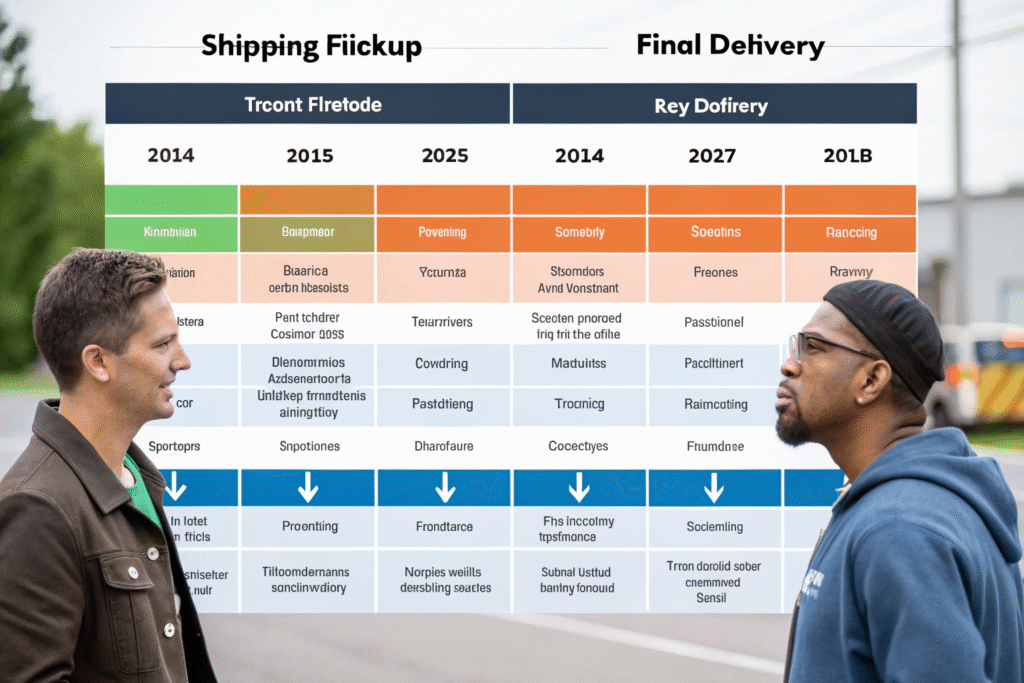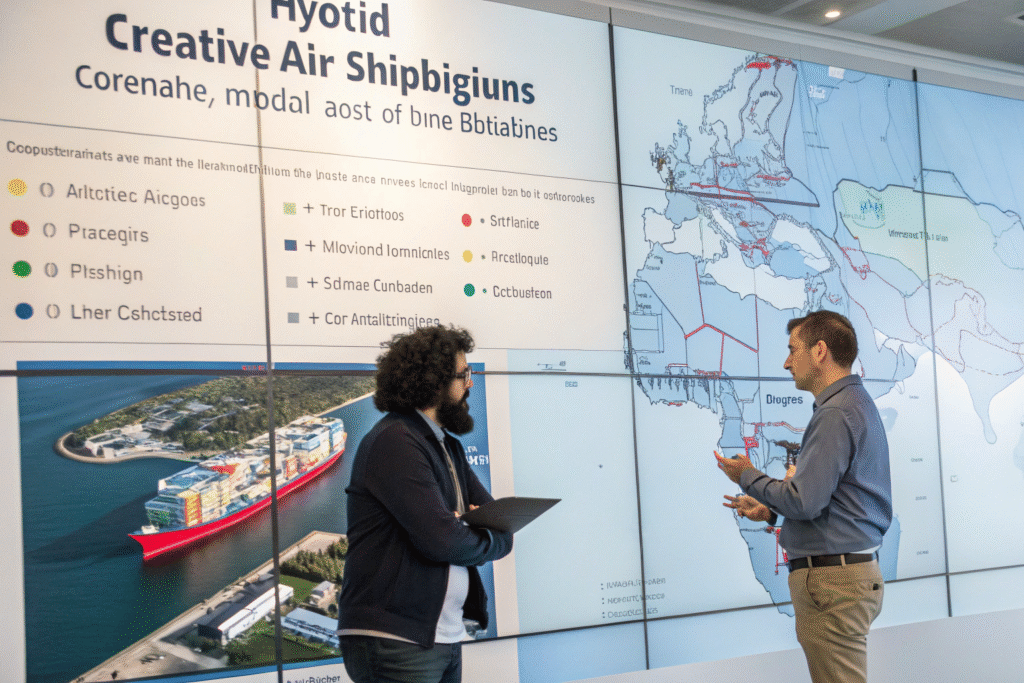Choosing between sea freight and air freight represents one of the most fundamental decisions in international shipping. Many businesses struggle with this decision, balancing cost considerations against timing requirements and other operational factors. Making the wrong choice can mean unnecessary expenses or missed market opportunities.
The choice between sea freight and air freight depends primarily on your budget, timeline, and product characteristics. Sea freight costs 4-6 times less but takes 4-6 times longer, making it ideal for non-urgent, high-volume shipments. Air freight provides speed and reliability for time-sensitive, high-value, or perishable goods despite higher costs.
Let's examine the specific factors that should guide your decision and explore hybrid options that might offer the best of both worlds for certain shipments.
What are the actual cost differences between sea and air freight?
Understanding the true cost differential requires looking beyond basic freight charges to include all associated expenses. The price gap is substantial but varies based on specific shipment characteristics and current market conditions.
For a standard 500kg shipment from Shanghai to Los Angeles, sea freight typically costs $400-800 while air freight ranges from $2,000-3,500. This 4-5x cost difference becomes even more dramatic with heavier shipments. However, businesses must also consider hidden costs like insurance differences, storage charges, and capital carrying costs. Air freight's speed often justifies its premium for time-sensitive goods, while sea freight's economy makes it indispensable for cost-sensitive volume shipments.

How does shipment density affect cost calculations?
Density significantly impacts the cost comparison:
- High-density goods (electronics, machinery) favor sea freight due to weight-based air pricing
- Low-density goods (clothing, accessories) may have better air freight value due to volume-based sea pricing
- Weight breaks in air freight can dramatically change per-unit costs
- Container utilization efficiency affects sea freight cost effectiveness
- Dimensional weight calculations can surprise air freight users
Understanding your product's density characteristics ensures accurate mode selection.
What hidden costs should you factor into your decision?
Beyond published freight rates, consider:
- Fuel surcharges that fluctuate differently for each mode
- Security fees and handling charges at different facilities
- Customs clearance timing affecting warehouse and demurrage costs
- Insurance premiums based on transit time and handling risk
- Inventory carrying costs during extended sea transit
These additional factors often tip the balance toward one mode or the other.
How do timing requirements influence your choice?
Transit time differences between sea and air freight are substantial, but the actual business impact extends beyond simple calendar days. Understanding your true timing needs helps determine whether the cost premium for air freight delivers corresponding business value.
Sea freight from China to US West Coast typically takes 18-25 days, while air freight requires 3-7 days. However, businesses must also factor in pre-carriage and post-carriage timing, customs clearance variations, and buffer time for unexpected delays. The critical question isn't just how long each takes, but how the timing difference affects your operations, sales opportunities, and customer relationships.

When does air freight's speed provide tangible business value?
Air freight justifies its cost premium when:
- Meeting launch deadlines for seasonal or promotional products
- Addressing stockouts that cause lost sales or production stoppages
- Supporting just-in-time manufacturing requiring precise delivery
- Capitalizing on market opportunities with limited windows
- Serving premium customers with strict delivery expectations
In these scenarios, the business value of speed often exceeds the additional transportation cost.
How reliable are transit time estimates for each mode?
Reliability varies significantly between modes:
- Air freight schedules are generally more predictable and consistent
- Sea freight faces more variables like weather, port congestion, and vessel scheduling
- Airport operations experience fewer labor disruption impacts
- Ocean carrier reliability has decreased in recent years due to various factors
- Emergency response capability differs during unexpected disruptions
Businesses with absolutely fixed delivery requirements often prefer air freight's predictability.
What product characteristics determine the ideal shipping method?
Your product's physical attributes, value, and special requirements significantly influence which shipping method delivers better value. Some products naturally suit one mode over the other, while others require careful analysis of trade-offs.
High-value, low-weight products like electronics, pharmaceuticals, and luxury goods often warrant air freight due to lower inventory carrying costs and reduced theft risk. Bulky, heavy, low-value items like furniture, raw materials, and industrial components typically require sea freight for economic viability. Perishable goods need careful evaluation of whether air freight's speed justifies its cost or whether specialized sea containers provide adequate preservation at lower cost.

How should perishable goods influence your decision?
Perishable products require special consideration:
- Air freight preserves freshness for highly perishable items
- Refrigerated containers enable sea transport for less time-sensitive perishables
- Shelf life percentages help determine viable transit options
- Market value preservation often justifies air freight premiums
- Special handling requirements vary between modes
The decision often comes down to whether specialized sea containers can maintain required conditions throughout longer transit.
What role does product value play in mode selection?
Product value affects multiple decision factors:
- Inventory carrying costs during transit favor faster shipping for high-value items
- Theft and damage risk profiles differ between modes
- Insurance costs as percentages of value vary with transit time
- Capital commitment during extended transit affects cash flow
- Obsolescence risk for trending or technological products
Higher-value products typically can absorb air freight costs more easily while gaining speed benefits.
When should you consider hybrid shipping solutions?
For many businesses, the choice isn't strictly between pure sea or air freight. Hybrid approaches can provide cost-effective solutions that balance timing and budget considerations. These creative approaches often deliver the best value for specific business situations.
Sea-air combinations use ocean transport for the long haul followed by air transport for regional distribution, typically saving 30-50% versus pure air while being 50% faster than pure ocean. Consolidated air services offer economy rates for less-urgent air shipments. Expedited ocean services provide premium vessel options with faster transit times at moderate cost increases. Understanding these hybrid options expands your decision framework beyond simple either-or choices.

How does sea-air transportation work in practice?
Sea-air combinations involve:
- Ocean transport from origin to a strategic intermediate hub
- Quick transfer to air cargo at the hub airport
- Air transport to final destination region
- Careful coordination ensuring smooth transitions between modes
- Cost-time optimization achieving middle-ground value
This approach works particularly well for shipments from Asia to Europe via Middle Eastern hubs.
What deferred air services offer cost savings?
Several air freight options provide savings through flexibility:
- Consolidated air freight sharing space with other shipments
- Deferred services using less-urgent capacity on passenger flights
- Off-peak scheduling utilizing lower-demand periods
- Multi-stop routing with optimized aircraft utilization
- Volume-based programs for consistent shippers
These approaches can reduce air freight costs by 20-40% while maintaining most speed advantages.
Conclusion
The sea freight versus air freight decision requires careful analysis of your specific budget, timeline, product characteristics, and business priorities. Sea freight delivers undeniable cost advantages for non-urgent volume shipments, while air freight provides irreplaceable speed for time-sensitive goods. The most successful businesses develop nuanced shipping strategies that match transportation methods to specific shipment requirements rather than applying one-size-fits-all approaches. By understanding the true costs, timing implications, and hybrid options available, you can make informed decisions that optimize both your logistics spend and your overall business performance.









